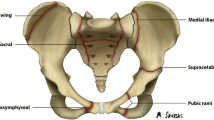Abstract
Concomitant traumatic injuries in the upper cervical spine are often encountered and rarely reported. We examined the data concerning 784 patients with cervical spine injuries following trauma, including 116 patients with upper cervical spine injuries. Twenty-six percent of patients with upper cervical spine injuries (31 cases) were found to have combined injuries involving either the upper or the upper and lower cervical spine. The frequent patterns were combined type I bipedicular fracture of the axis and dens fracture, and combined dens fracture and fracture of the posterior arch of C1. Other patterns posed specific problems, such as combined dens and Jefferson fracture and combined dens and C2 articular pillar fracture. Seventy percent of atlas fractures, 30% of C2 traumatic spondylolistheses and 30% of dens fractures were part of a combination. A total of 1.7% of patients with lower cervical spine injuries had a combined injury in the upper cervical spine. A comprehensive therapeutic schedule is outlined. Combined injuries in the upper cervical spine should be sought in any patient with a cervical spine injury.
Similar content being viewed by others
Author information
Authors and Affiliations
Additional information
Received: 11 October 1999/Revised: 12 February 2000/Accepted: 1 March 2000
Rights and permissions
About this article
Cite this article
Gleizes, V., Jacquot, F., Signoret, F. et al. Combined injuries in the upper cervical spine: clinical and epidemiological data over a 14-year period. E Spine J 9, 386–392 (2000). https://doi.org/10.1007/s005860000153
Issue Date:
DOI: https://doi.org/10.1007/s005860000153




